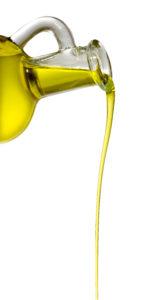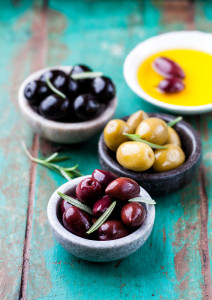 Long claimed to be a uniquely health-supportive food, olives have proven antioxidant and anti-inflammatory benefits. A true Mediterranean treasure, olives are grown around the entire area and into Saudi Arabia, Iraq and Iran. Greek-style black olives, Spanish-style green olives, Kalamata-style olives, and many different methods of olive preparation provide us with valuable amounts of many different antioxidant and anti-inflammatory nutrients.
Long claimed to be a uniquely health-supportive food, olives have proven antioxidant and anti-inflammatory benefits. A true Mediterranean treasure, olives are grown around the entire area and into Saudi Arabia, Iraq and Iran. Greek-style black olives, Spanish-style green olives, Kalamata-style olives, and many different methods of olive preparation provide us with valuable amounts of many different antioxidant and anti-inflammatory nutrients.
The olive plant, called Olea europaea (litereally ‘oil from Europe’) is central to the much-lauded Mediterranean Diet, both as olives and as olive oil used for cooking and dressings, and it’s known that olives have formed part of our diet – and have been cultivated – for thousands of years duly getting name-checked in the Bible (where an olive branch represents a peace offering) and the Quoran.
The trees themselves are famously long-lived, often being hundreds of years old, and olives are actually the fruits of these old timers. Drupes are fruits that have a pit or stone inside surrounded by a larger fleshy portion called the pericarp, as seen with mangos, cherries, peaches, plums, apricots, nectarines as well as almonds and pistachios.
One of the world’s biggest fruit crops, Spain is the largest single producer of olives at approximately 6 million tons per year followed by Italy, Greece, Turkey and Syria. As much as 90% of all Mediterranean olives are crushed for the production of olive oil, the remainder being kept in whole food form for eating, either whole, pitted, oil-cured, stuffed, sliced or thrown into cooked dishes.
Oily properties
In traditional herbal medicine practices, preparations from olives and olive leaves have often been used in treatment of inflammatory problems, including allergy-related inflammation. Olive extracts have now been shown to function as anti-histamines at a cellular level by blocking special histamine receptors (called H1 receptors). Their copper content is one of the reasons why olives are good anti-oxidants, and copper-deficient diets seem to lead in some cases to increases in blood cholesterol levels. Copper also helps with the incorporation of iron into red blood cells, preventing anemia and is involved with generation of energy from carbohydrates inside of cells.
Research studies suggest that Mediterranean diet, which is rich in monounsaturated fatty acids help to prevent coronary artery disease and strokes by favoring healthy blood lipid profile. Oil expressed from olives is recognized as one of the healthiest of the edible oils since it contains less saturated fat than other oils, and includes Omega-6 and Omega-3 essential fatty acids.
 Colour coded
Colour coded
Green Olives are picked when the fruit is fully-grown but before having ripened. Includes olives in shades of green and yellow. Semi-ripe olives are often turning colour, having been picked at the beginning of the ripening cycle, so there are shades of red to brown on the outside, but the fruit inside will still be green. Black Olives are ripe olives, picked at full maturity and coming in colours from purple to brown and black.
When freshly picked from the tree, olives often (but not always) have a bitter taste that is related to their phytonutrient content. To mitigate against this bitterness, olives are cured (or pickled). There are three basic types of curing for olives: water curing, brine curing, and lye curing. Each can affect the color and composition of the olives.
As well as being grown across a wide area around the Med, there’s also wealth of varieties including Kalamata olives which come from Kalamon olive trees in southern Greece. European Union (EU) law provides Kalamata olives with Protected Geographical Status and Protected Designation of Origin. The many other varieties include Manzanillo, Sevillano, Picholine and Rubra.
Nutrition content of olives
A serving of 100g of olives (can vary a little bit in relation to how they are pickled) averagely contains 115 calories (expect 5 cals per olive) but only 6g of carbs, so almost a negligible amount unless you’re eating barrel-fulls. They have a very low protein content and a low GI profile. While they have 10g of fat in a 100g serving, about 15% of your recommended daily amount (RDA*), the fats are ‘good fats’. There’s also a healthy wallop of Copper (28%), Iron (18%), Potassium (19%), dietary fibre (12%) and Vitamin E (10%). The sodium content is high, and varies according to preparation – many olives are cured in brine, hence accounting for up to 30% of your RDA, so not great for a low-salt diet. *Percentage RDAs are based on a 2,000-calorie diet.
Great as part of a diabetic diet.
This news item first appeared in our free-to-receive online magazine. Go to the top of this page to sign up – we just need your email address.



